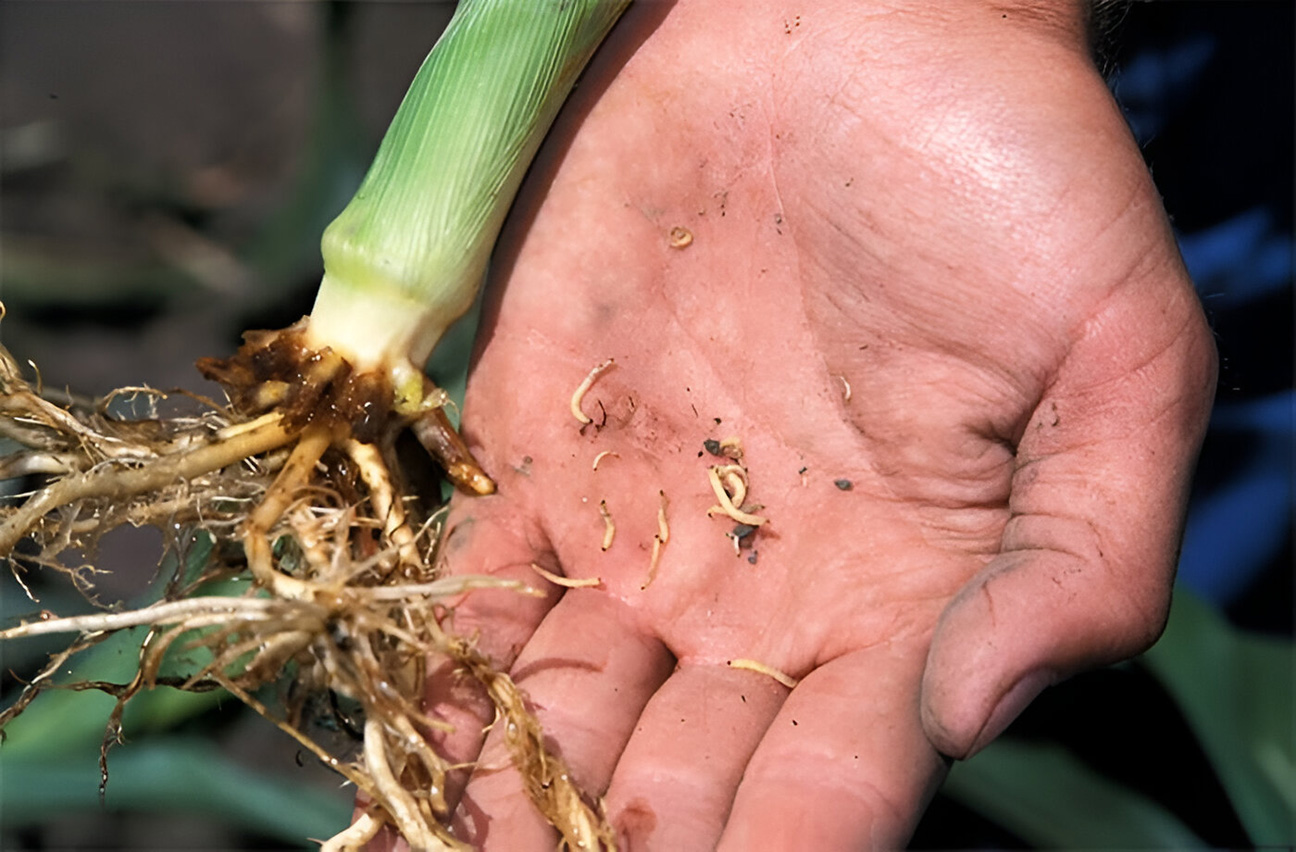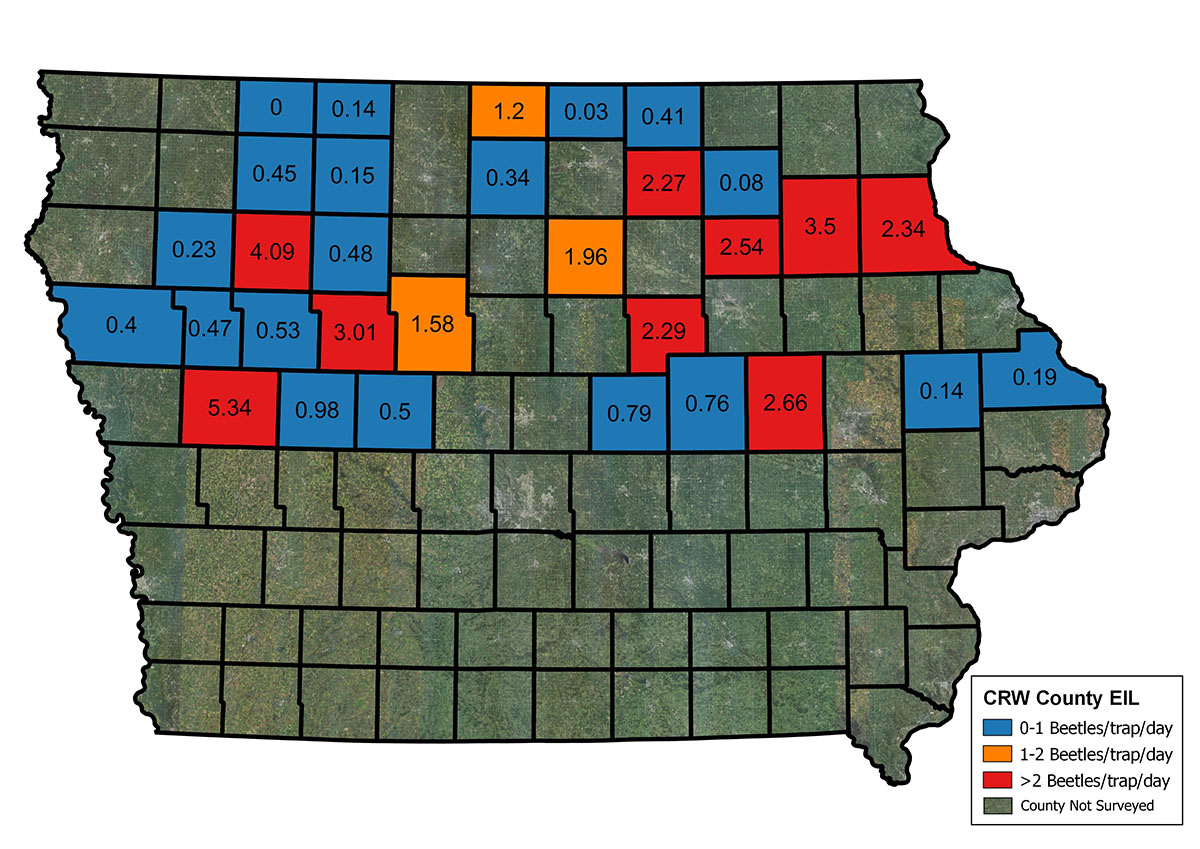
Truncated and damaged roots caused by infestations of corn rootworm larvae cripple plant vigor, produce lodging and significantly reduce yields. (Photo: Purdue University)
Getting to the root of the problem through trials
August 17, 2023 | Kriss Nelson
Corn rootworm can cause severe damage to corn and is an insect that should not be ignored.
To help farmers understand what is happening in their fields, the Iowa Soybean Association (ISA) is partnering with Bayer Crop Science to survey corn rootworm pressure throughout the state.
ISA Research Agronomist Alex Schaffer says the service is available to farmers at no cost and provides scouting to serve both Bayer and the farmer.
“This is an opportunity to illustrate the value of rotation and show the pressure corn traits are under,” he says. “This is an important piece of integrated pest management, resistant management and sustainability.”
ISA and Bayer are encouraging farmers to be aware of the potential pressure of corn rootworms by scouting for the pest and being alert for downed corn while harvesting.
Matt Carroll, ISA analytics and Insights Lead, says this is the third year ISA has worked with Bayer.
“The Research Center for Farming Innovation is working with crop advisors in Iowa to help recruit farmers,” says Carroll. “They are placing sticky traps in the field, and report counts back to us, and we are sharing that data with the farmer and Bayer. Not only does this help to feed Bayer’s understanding of corn rootworm pressure and efficacy of their traits, but alerts growers of the risks.”
Corn rootworm pressure
This year, over 30 counties in Iowa are included in the trial, and results show economic injury levels. These economic thresholds are based on a capture rate of two or more beetles per trap per day. This indicates there could be a high corn rootworm population for the following year.

Currently, 9 of the 30 counties are showing at or above the economic injury level; 3 are categorized in the moderate zone, and 19 are seeing relatively lower pressure.
These results are from sampling conducted from July 12-Aug. 11.
Managing corn rootworm
This fall could be the time for farmers to consider what management decisions they must make for next year’s growing season.
“Rotation of crops, trait selection and insecticide through the planter would be the main management tactics,” says Schaeffer.
There have been reports of an extended diapause, meaning the eggs can remain dormant for two winters, surviving a season of soybeans and becoming a threat the following year in corn.
“This may mean rotation alone may not be enough,” says Schaffer. “If you see corn rootworm pressure in your field, consider rotation in addition to traits and your insecticide.”
Back